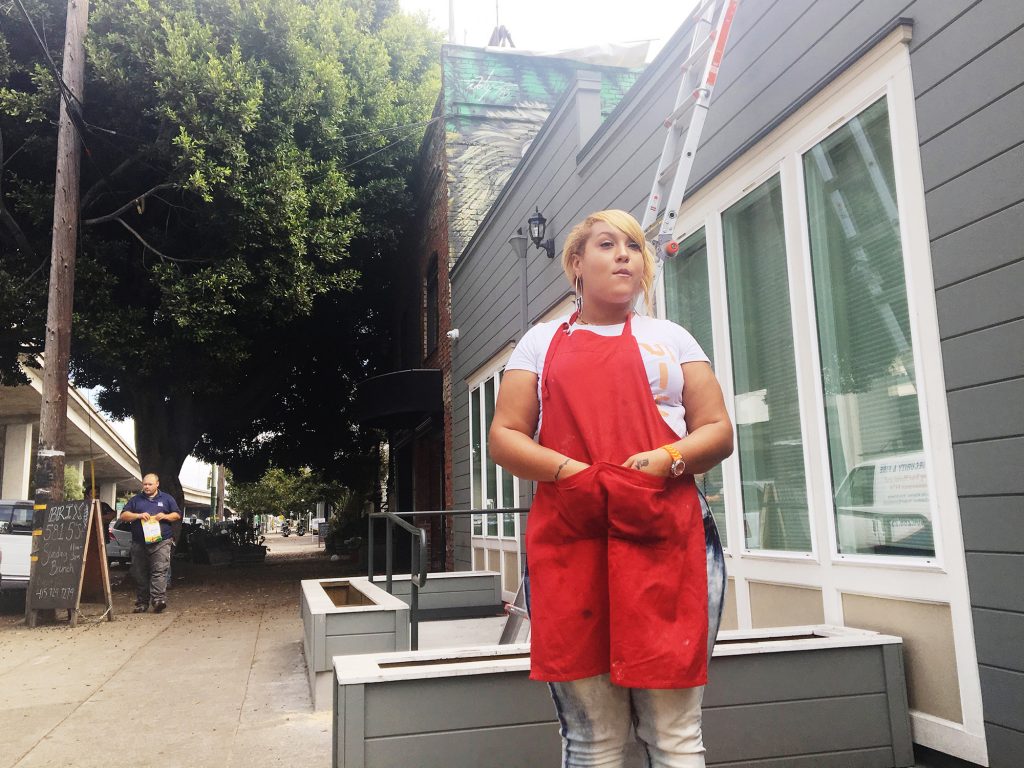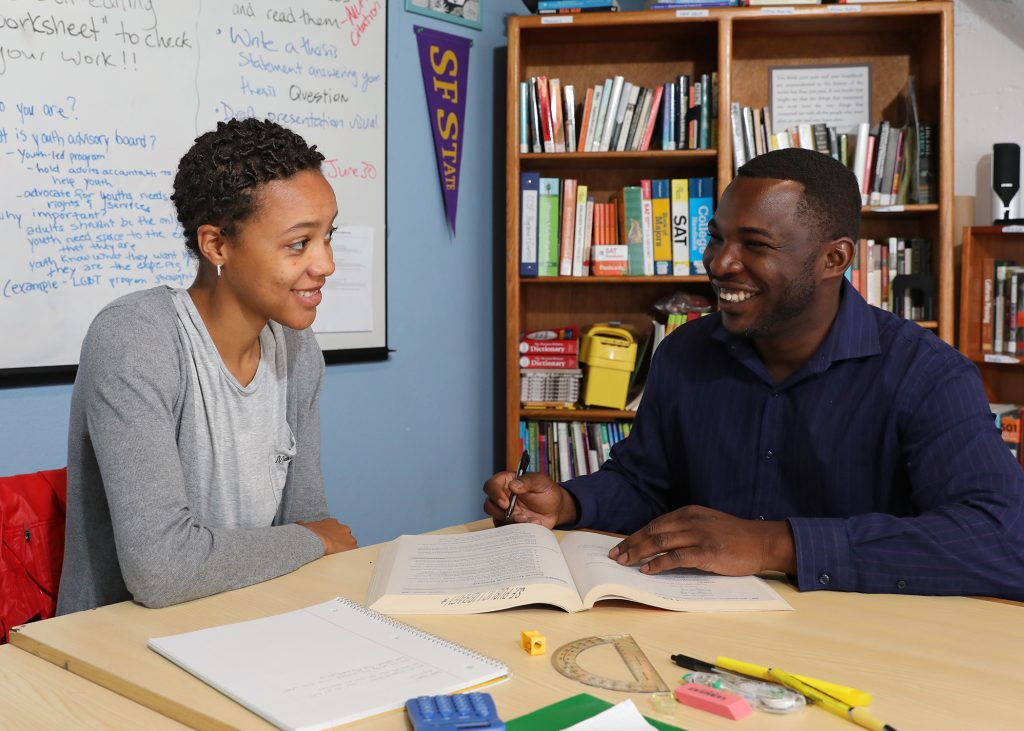Amid affluence, youth homelessness surges in the Bay Area
 Iris Schneider
Iris Schneider
 Iris Schneider
Iris Schneider
The San Francisco Bay Expanse, with its Teslas, tech get-go-ups and $3,700 one-bedroom rents, is one of the almost affluent regions in the country but besides home to about 15,000 homeless children.
Most of the students are in the urban areas, only they too live in the wealthy enclaves. They're in Menlo Park, they're in the San Ramon Valley, they're even in Ross in Marin County, where the median household income tops $200,000. And they're most certainly undercounted: parents report to schools whether their family unit is homeless, and they have plenty of reasons not to acknowledge to it: fear of deportation, fear of the government taking their children away, and shame.
According to the Department of Education, "homeless" means living in a car, cabin, military camp, shelter, on the street or doubled upwards with other families due to financial hardship. In the Bay Surface area, most of those children are doubled up with other families, although in San Francisco hundreds are living on the street or in shelters.
Tweet this chart
The Bay Area has 420 school districts, charter schools and county offices of educational activity in its nine counties, spread over half-dozen,900 square miles from Cloverdale to Gilroy. But almost none accept a higher percentage of homeless children than the Ravenswood Metropolis Elementary School Commune in Eastward Palo Alto.
The Ravenswood commune is less than three miles from Stanford Academy, even so has one of the highest percentages of homeless students in the state. More than than 37 percent of the district's 3,076 students are homeless, and of those, 96 percent alive "doubled upwards" with other families, sharing a home or flat or even a garage.
Nearly 88 per centum of Ravenswood students qualify for costless and reduced-toll tiffin, and 64 pct are English language learners.
The commune receives some federal grant coin to help these children, but "that's just a drib in the saucepan. A Band-aid," said Superintendent Gloria Hernandez-Goff. "Paying for these services ends upwards being a huge encroachment into the full general fund. But we practice it considering kids can't learn if they're hungry, if they're tired, if they're distracted or worried. Our schools demand to be a safe place where families know their children are cared for."
The district besides gets actress funding under the state's Local Control Funding Formula, which steers money to schools to serve high-needs students, including those who are homeless, depression-income, English language learners or in foster care.
Ravenswood provides three meals a 24-hour interval, plus snacks, to all students regardless of whether they're homeless and arranges for a nutrient banking company to requite regular, two-week supplies of groceries to parents. The district also provides free uniforms for students, washers and dryers on school campuses, full-time counselors at every school, and arranges for families to get free showers at the local YMCA. A nearby Catholic church allows families to sleep overnight in the parking lot.
Perhaps the biggest expense, Hernandez-Goff said, is transportation. Children who bounce betwixt homeless shelters are legally entitled to free transportation to school, so the district will send buses, taxis or even Uber to deliver the children to schoolhouse every twenty-four hours. Homeless families tend to movement oftentimes, and sometimes find themselves at shelters 20 miles away. By police force, homeless children tin can continue attending the aforementioned school without having to transfer to a new schoolhouse every time their family unit moves.
"It's expensive, but nosotros patch things together," she said. "The bottom line is, the affair that has e'er unified this country is public education. Schools have always stepped upward to address the needs of students. Information technology's non simply about books — it's then much more."
In Ravenswood, almost of the homeless families are Latin American immigrants living with other immigrant families. Merely in San Francisco, country data show, roughly one-half of the city's 1,984 homeless students live on their own: teenage runaways escaping abusive homes or violence elsewhere.
No one knows exactly where these students live in San Francisco, but 300 a nighttime sleep at the Larkin Street Youth Services shelter. Hundreds of others slumber in parks or under freeways, on friends' couches, or trade sex for a place to sleep, according to Larkin Street'due south executive managing director, Sherilyn Adams.
Amazingly, some find a way to go to schoolhouse every mean solar day.
"A lot of these kids are not visibly homeless, and they oft don't desire you to know they're homeless," Adams said. "Adolescence is a time of blending in, not standing out. And so these kids face a lot of shame, a lot of isolation. Trying to practice school work while figuring out where they're going to sleep every night — they have a lot on their plate."
In add-on to the shelter, Larkin Street provides medical and behavioral services, street outreach and a drop-in center. Some other nonprofit, Hamilton Families, contracts with San Francisco Unified to provide after-school tutoring and activities, field trips, bus passes, uniforms and other services to more than than 800 children annually in the city.
In the Due east Bay, Oakland Unified saw its number of homeless students shoot up from 400 in 2014-xv to 635 in 2015-16 to 901 in 2016-17, largely due to the escalating cost of housing, the district'southward homeless coordinator, Trish Anderson, said.
"Those numbers are real," she said. "Rents are also high, and people are losing their homes."
Oakland Unified provides a 1-stop shop of services for its homeless families, including nutrient, referrals to shelters and help enrolling in Medi-Cal. The commune too provides immediate enrollment to homeless students, allowing them to waive much of the paperwork, and bus service to schoolhouse. Like San Francisco, Oakland has a significant number of homeless youth who aren't living with their families. Some find emergency shelter at DreamCatcher, an eight-bed shelter that provides a range of services for students as long as they remain in schoolhouse.

Jazmyn Brown, coordinator, stands outside of the DreamCatcher youth shelter on Jefferson Street in Oakland.
Only north of San Francisco, San Rafael City Schools in Marin Canton goes to great lengths to identify homeless children and train teachers to arrange them. In 2016-17, the district reported 625 homeless children at its eight elementary schools, one of the highest rates in the state.
As is the case throughout California, lack of affordable housing is the primary cause for the high homeless rate in the area. Immigrant parents working in the restaurant, housekeeping or landscaping sectors cannot beget to rent an flat, and so they share space with other families. Median monthly rent for a two-bedroom apartment in San Rafael is $3,080, almost 3 times the national boilerplate.
"We definitely accept affordable housing issues. Unfortunately, that's not something officials are moving very quickly on," said Julia Neff, accountability coordinator for San Rafael Urban center Schools. "But it'south the school district'due south responsibility to run into these students where they are. We practise what we tin."
To get more reports like this i, click here to sign upward for EdSource'due south no-cost daily e-mail on latest developments in education.
Source: https://edsource.org/2017/homeless-bay-area/588094



0 Response to "Amid affluence, youth homelessness surges in the Bay Area"
Post a Comment